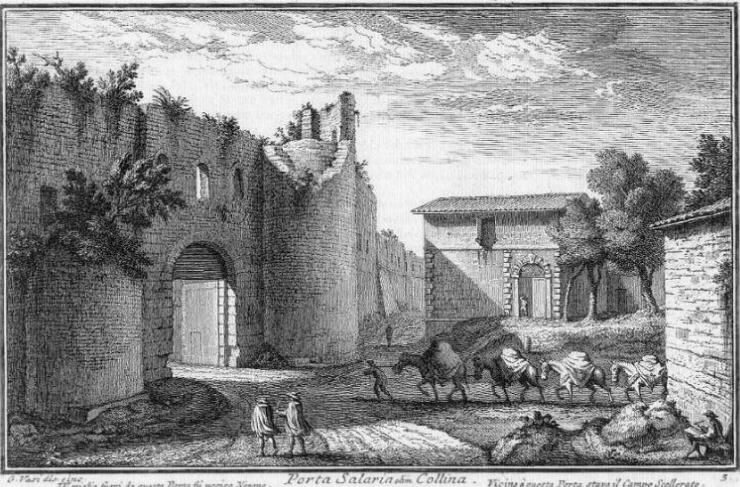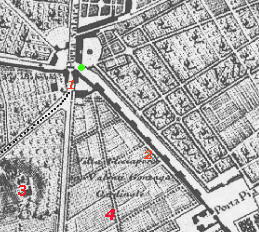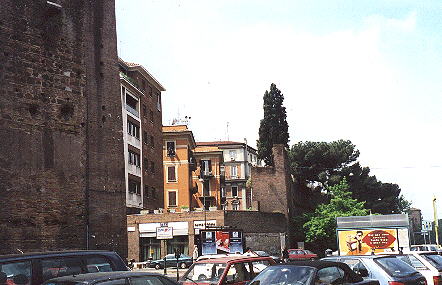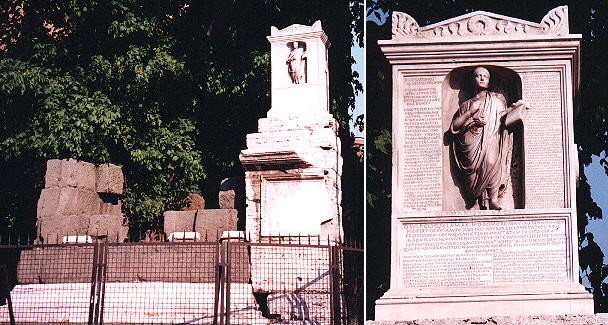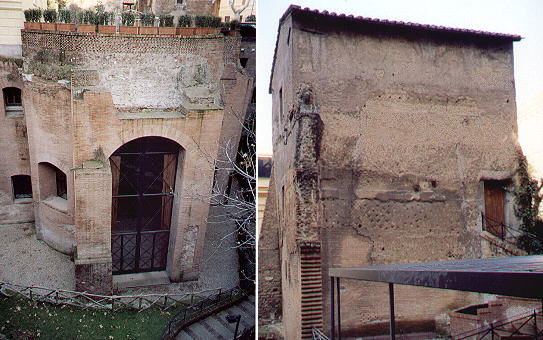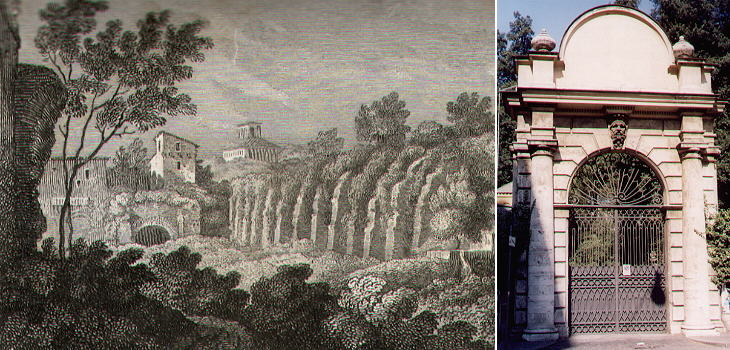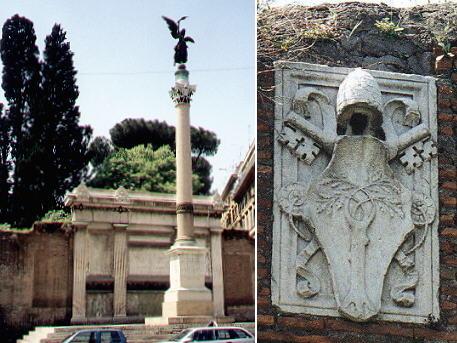  Porta Salaria (Book 1) (Day 2) (Map A2) (Rione Colonna) and (Rione Trevi)
In this page:
Porta Salaria (or Salara) was the Gate of Salt and although it is
unlikely that in the XVIIIth century any salt came to Rome from the Adriatic
sea, Vasi shows a little caravan of horses with the coat of arms of Benedictus
XIV entering the city. The view is taken from the green dot in the small 1748 map here below which shows:
1) Porta Salara; 2) Breach of Porta Pia; 3) Horti Sallustiani; 4) Villa Paolina. The dotted line in the small map delineates
the border between Rione Colonna (left) and Rione Trevi (right).
Porta Salaria was greatly damaged in 1870 by the artillery of the Italian army. A new gate was built after the annexation of Rome to the Italian Kingdom, but after a few years it was pulled down to respond to the needs of modern life.
The towers of the gate were built on top of existing tombs, so their excavation brought to light the pre-existing buildings among which the tomb of Quintus Sulpicius Maximus with a little monument to this young poet who at the age of 11 won a poetic contest at the time of Domitianus.
Gaius Crispus Sallustius was a friend of Julius Caesar and was appointed by him proconsul of Africa Nova (today's Algeria). At the death of Caesar in 44 B.C. the political career of Sallustius came to an end and with the fortune he had made in Africa he built a large villa in the northern part of Rome, where he wrote several books covering the main historical events of his lifetime. Eventually the villa was acquired by the emperor Tiberius and it became a favourite residence of the Roman emperors. The ruins of the Horti Sallustiani were one of the attractions of Villa Ludovisi and several statues were found in the site. In the late XIXth century the ground of the area was levelled and the main building of the Horti ended up in a sort of hole. Today it belongs to the Chamber of Commerce of Rome and it is used as a conference room. The site has also some medieval houses built making use of Roman walls.
In the XIXth century the balance between prints showing monuments of ancient and of modern Rome changed in a
significant manner. The market became very much oriented towards the ruins of the glorious past, rather than the theatrical architectures of the Baroque period.
For this reason Gaetano Cottafavi, who in 1842 illustrated a large guide of Rome by Jeremiah Donovan, thought to add to the most usual views of ancient Rome, the print (partially) shown
above portraying the Horti Sallustiani. In the background, to the right of the buildings shown in the previous photo, it is
possible to see the casino of Villa Paolina, built in 1750 ca. by Cardinal Silvio Valenti Gonzaga. The Walls between Porta Salaria and Porta Pia
The short stretch of walls between the two gates retains memories
of the history of Rome and of Italy. The column celebrates the Breach of
Porta Pia, through which the Italian Army entered Rome on September 20,
1870. A few meters away there is a beautiful coat of arms of one of the
Della Rovere popes (Sixtus IV and Julius II).
Next plate in Book 1: Porta Pia Next step in Day 2 itinerary: Villa Albani You have completed your tour of Rione Colonna! Start your tour of Rione Trevi: next step: Porta Pia.
Go
to |
All images © 1999 - 2003 by Roberto Piperno. Write to romapip@quipo.it
